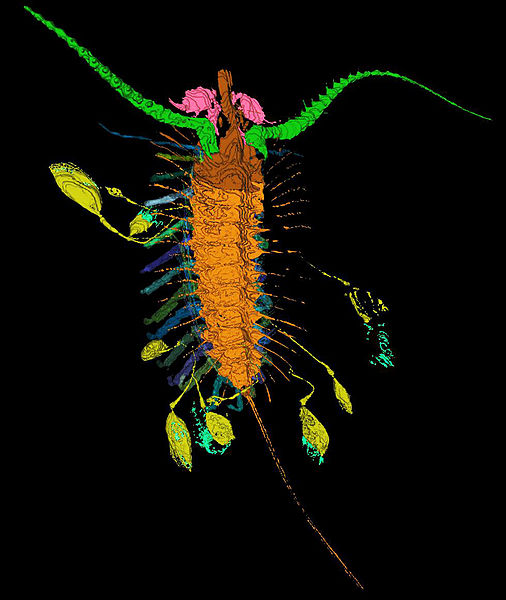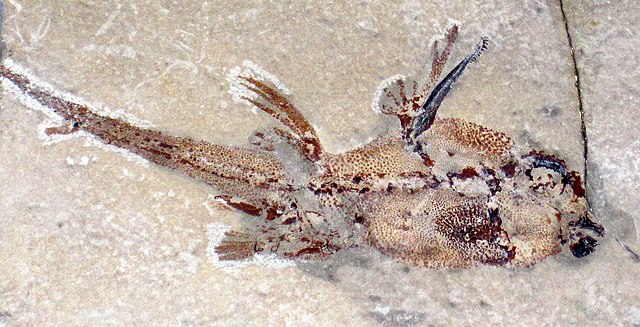Coalbrookdale Formation, earlier known as Wenlock Shale or Wenlock Shale Formation and also referred to as Herefordshire Lagerstätte in palaeontology, is a fossil-rich deposit (Konservat-Lagerstätte) in Powys and Herefordshire at the England–Wales border in UK. It belongs to the Wenlock Series of the Silurian Period within the Homerian Age. It is known for its well-preserved fossils of various invertebrate animals many of which are in their three-dimensional structures. Some of the fossils are regarded as earliest evidences and evolutionary origin of some of the major groups of modern animals.
Image: The Pentastomid Invavita piratica in Association with the Ostracod Nymphatelina gravida
Image: Cascolus ravitis holotype
Image: Aquilonifer 2
Image: Dalmanites soft tissue
A Fossil-Lagerstätte is a sedimentary deposit that exhibits extraordinary fossils with exceptional preservation—sometimes including preserved soft tissues. These formations may have resulted from carcass burial in an anoxic environment with minimal bacteria, thus delaying the decomposition of both gross and fine biological features until long after a durable impression was created in the surrounding matrix. Fossil-Lagerstätten span geological time from the Neoproterozoic era to the present.
Well-preserved basal arthropod Opabinia from Burgess Shale Lagerstätte (Middle Cambrian)
Archaeopteryx specimen from Solnhofen Lagerstätte (Upper Jurassic)
Fossil specimen of Echinochimaera from the Bear Gulch Limestone (Middle Carboniferous)
An early Stromatolite








